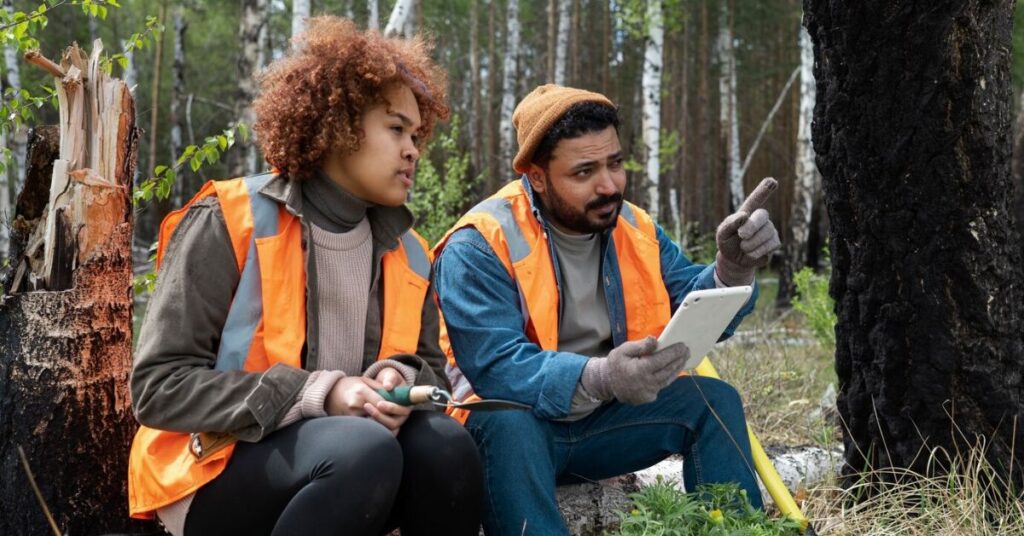Ownership of native bushland can bring great rewards. You get fresh air, wildlife and scenic views, as well as the chance to protect Australia’s natural heritage. It also comes with some responsibilities. If you intend to harvest timber and other forest products on your land for commercial purposes, you will need to comply with the state regulations known by the name Private Native Forestry Codes of Practice.
Do not worry. We will explain to you in simple language what these codes demand so that you can manage your own private patch sustainably. The codes may seem complicated at first but following good forest practices can be achieved if you follow them step-by-step. Once you have a good understanding of the rules and regulations, it will be easier to care for your native forests while protecting their long-term future. Do read, understanding Private Native Forestry Codes of Practice: A Guide for Landowners for a clear insight.
Who Does the Private Native Forestry Code Apply to?
These codes outline the legal requirements that landowners must follow if they want to harvest native forests on their property for commercial purposes. The codes cover the sale of timber, forest products such as honey, seeds and bush food.
If you want to earn money with your trees, it is important to familiarize yourself with the codes of your state. These codes are in place to ensure that native forests are used for commercial purposes sustainably.
Why are codes important?
Australia’s native forest is threatened by land clearing, weeds and pests, drought, and unsustainable logging. The forestry code protects the future of indigenous species and ecosystems by:
- Preventing habitat destruction and over-clearing
- Regenerating forests can help maintain ecosystem health
- Stopping erosion, and managing bushfire risk
- Water catchment and soil quality conservation
- Maintaining threatened wildlife populations
By following the codes, you can protect your forest for the long-term while keeping it productive. Both conservation and commercial benefit are a positive outcome.
What are the codes?
The codes give detailed information on the legal requirements for managing and harvesting native forests on private land sustainably, including:
Planning and Monitoring
- Planning a harvest
- Surveying and mapping of the forest
- Risks such as erosion or dieback are monitored.
- Keep records of harvest volume and regeneration
Environment Protection
- Protected conservation areas such as rainforests, wetlands, and streams
- Keep hollowed out trees as wildlife habitat
- Avoiding impact on threatened species
- Stopping the spread and invasiveness of pests and weeds
- Protecting water quality and limiting erosion
Timber Harvesting
- Tree retention and harvesting limits are governed by rules.
- Roads, tracks and landings guidelines
- How to safely fell trees
- Avoid damage to timber when removing it.
The codes, while comprehensive, are also designed to allow you to adapt your forest management to the local conditions. You can get guidance from your state agency to make sure that you are following the legal requirements.
How to Follow Codes: Step-by-Step Guide
The forestry code can be broken into manageable steps.
1. Discover Your Native Forest
Learn about the native vegetation of your property, including the tree species, the understorey and any rare habitats. Also, pay attention to wildlife activity, water flow, etc. This will help you to make informed decisions about your sustainable management.
2. Create a Property Management Plan
Prepare a forest plan that meets the code requirements. Include areas to be protected and a schedule for sustainable harvesting.
3. Approval is Required
You will need to get any approvals you require for your property plans, harvesting limits, road construction, and threatened species management. Your state agency will guide through the specific consent procedure.
4. Harvest with Best Practice
Follow the code requirements when undertaking forestry activities. This includes road construction, tree felling and extraction of timber, machine use, replanting, etc.
5. Keep Records
Document all your forest activities, such as harvest volume, regeneration, and compliance. It is a way to demonstrate your commitment to sustainable practices.
6. Monitor and adapt
Regularly monitor your forest for health, growth, erosion, weeds etc. As needed, update plans to reflect emerging risks and meet evolving code requirements.
It is important to follow the steps in a systematic manner. Contact your state agency or local natural resource management group early. They can offer you valuable practical advice tailored to your specific situation.
The codes provide a framework that allows you to share the bounty of nature sustainably. By following the right process, you can maintain your forest’s health and continue to benefit from its timber as well as other gifts in the future.
Useful Resources
It can be difficult to manage a native forest sustainably while following codes. You don’t need to do it alone. You can find some excellent resources that will help you on your journey.
- The State Forestry Agency can help you understand the code requirements that are relevant to your property and situation.
- Local Landcare groups– Your local NRM experts are a treasure trove of practical and on-the-ground information for managing native habitat sustainably.
- Online code guidelines State agriculture department websites provide detailed information on specific codes and offer downloadable information sheets.
- Private Forestry Consultants– Hiring an experienced forestry consultant will help you develop a property plan, and ensure that it is compliant.
- Facebook Forestry groups – Online communities like AUSSIE FORESTERS offer advice and support by other landowners.
Conclusion
Do not be intimidated by Private Native Forestry Codes. You can enjoy your forest in a sustainable way by following a step-by-step guide and using sound advice. You can always ask for help if you need it.







